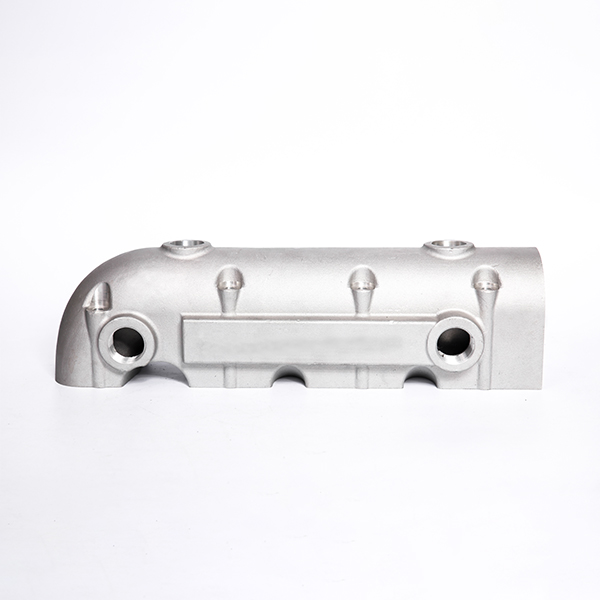Mobile:+86-311-808-126-83
Email:info@ydcastings.com
multi stage impeller
Understanding Multi-Stage Impellers Design, Function, and Applications
In the realm of fluid dynamics, the term multi-stage impeller refers to a type of impeller used primarily in centrifugal pumps and compressors. These devices are essential for enhancing fluid pressure and flow rate in various industrial applications, ranging from water supply systems to chemical processing plants. This article delves into the design, function, and applications of multi-stage impellers, highlighting their significance in modern engineering.
What is a Multi-Stage Impeller?
A multi-stage impeller consists of multiple impeller stages mounted on a single shaft, working together to achieve greater pressure increases than a single-stage impeller could provide. Each impeller stage acts as an energy transfer mechanism, converting mechanical energy into kinetic energy, which is then transformed into pressure energy as fluid moves through the pump or compressor.
The fundamental principle behind a multi-stage impeller is relatively straightforward as the fluid passes through each impeller stage, it gains kinetic energy due to the rotation of the impeller blades. This energy is further converted into pressure energy in the diffuser or volute that follows each impeller stage. The cumulative effect of this process across multiple stages results in a substantial increase in fluid pressure, making it ideal for applications requiring high flow rates and pressures.
Design Considerations
Designing a multi-stage impeller requires careful consideration of several factors, including flow characteristics, operational efficiency, and the physical properties of the fluid being pumped. Key design elements include
1. Number of Stages The number of stages in an impeller design directly affects the pressure increase and flow rate. More stages generally allow for higher pressure gains, but they can also introduce additional complexity and potential for mechanical failures.
2. Impeller Geometry The shape and size of the impeller blades are critical for optimizing fluid flow and energy transfer. Designers often use computational fluid dynamics (CFD) simulations to predict how different geometries will perform under various operating conditions.
3. Material Selection The materials used to construct multi-stage impellers must withstand the operating environment, including thermal stresses, corrosion, and erosion. Common materials include stainless steel, plastic composites, and various alloys, chosen based on the application and fluid properties.
multi stage impeller

4. Clearances and Fit Precision in the fit and clearances between the impeller and casing is vital to minimize hydraulic losses and maximize efficiency. Tight tolerances help prevent cavitation and ensure smooth operation.
Applications of Multi-Stage Impellers
Multi-stage impellers serve a variety of applications across multiple industries
. Some prominent uses include1. Water Supply and Distribution Multi-stage pumps are commonly used in municipal water systems to transport water over long distances and to lift water from deep wells.
2. Industrial Processes In chemical processing, multi-stage impellers are utilized for transporting liquids under high pressure, enabling reactions that might not otherwise be feasible.
3. Oil and Gas Industry Multi-stage centrifugal pumps are crucial for transporting crude oil and natural gas, especially in offshore drilling operations where pressures can be extremely high.
4. HVAC Systems Multi-stage impellers improve the efficiency of heating, ventilation, and air conditioning systems by facilitating the movement of gases and fluids through complex ducting and piping networks.
5. Power Generation In power plants, multi-stage pumps are employed in cooling systems and for transferring fuel, playing a critical role in maintaining operational efficiency and safety.
Conclusion
Multi-stage impellers represent a sophisticated solution for enhancing fluid dynamics across a range of applications. Their ability to achieve high pressures and flow rates makes them indispensable in many industries, from municipal water systems to complex industrial processes. As technology advances, designs may continue to evolve, with enhanced materials and methodologies that promise even greater efficiency and reliability. Understanding the intricacies of multi-stage impellers is crucial for engineers and industries that rely on effective fluid management.
-
Why Should You Invest in Superior Pump Castings for Your Equipment?NewsJun.09,2025
-
Unlock Performance Potential with Stainless Impellers and Aluminum End CapsNewsJun.09,2025
-
Revolutionize Your Machinery with Superior Cast Iron and Aluminum ComponentsNewsJun.09,2025
-
Revolutionize Fluid Dynamics with Premium Pump ComponentsNewsJun.09,2025
-
Optimizing Industrial Systems with Essential Valve ComponentsNewsJun.09,2025
-
Elevate Grid Efficiency with High-Precision Power CastingsNewsJun.09,2025











